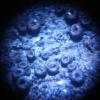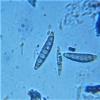
25-03-2017 11:55
 Viktorie Halasu
Viktorie Halasu
Hello forum,I'd like to ask, what differences are

25-03-2017 12:31
En hoja de grama salada (Distichlis spicata)No he

26-03-2017 09:44
greet van autgaerdenHi everybody,Can anyone help me with this: On the

25-03-2017 02:32
Hi all,we found these species 2x on mouse dung, 1x

18-03-2017 19:54
Apologies for the apaling state of this and poor p





